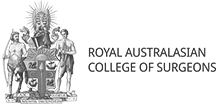Knee Injuries and Instability
Australia is a sporting nation and unfortunately that means we also have a high incidence of sporting injuries. Knee injuries can be caused by multiple mechanisms :
- Direct blow to the knee
- Twisting
- Pivoting
- Cutting
- Jumping up and landing incorrectly
Normal Knee Anatomy
A normal knee is made up of the femur (thigh bone) on the tibia (shin bone) with the patella (knee cap), which slides up and down a groove on the front of the thigh bone.
The parts of the bone that come into contact with each other are covered by a thick layer of articular cartilage (joint surface cartilage).
Between the femur and tibia, there is a meniscus on each side which is a pad of cartilage which acts a shock absorber.
There are collateral ligaments on the sides of the knee and cruciate ligaments in the centre of the knee which stabilise the joint. There is also a ligament on the inner side of the patella that prevents it from dislocating.
Knee Injuries
With knee injuries, one or more of the structures of the knee can be injured. This can result in :
- Anterior or Posterior Cruciate Ligament (ACL or PCL) rupture
- Medial or Lateral Collateral Ligament rupture
- Patella dislocation
- Meniscal tears
- Fractures
- Loose bodies
How to treat knee injuries
If you sustain a knee injury, the first treatment is RICE. Rest the knee, apply Ice to it, Compress the joint by wrapping it firmly with a bandage, Elevate the knee above the level of your heart. This helps to minimise pain and swelling.
Visit your GP or emergency department as soon as possible to have your knee assessed. Xrays can be performed and an MRI scan organised if required. You may need to use crutches until the knee settles. You can then be referred for physiotherapy or to an orthopaedic surgeon for further management.
Some knee injuries settle down without surgery but many will keep causing symptoms of pain, instability or locking of the knee. When you see Justin, he will assess your knee as well as what your goals are, in terms of what level of sport or other activities you want to return to. He will then explain your injury to you and the treatment options.
For more information on specific knee injuries, please click on the links below.
Anterior Cruciate Ligament rupture
Posterior Cruciate Ligament rupture
Medial or Lateral Collateral Ligament rupture
Fractures
Loose bodies








